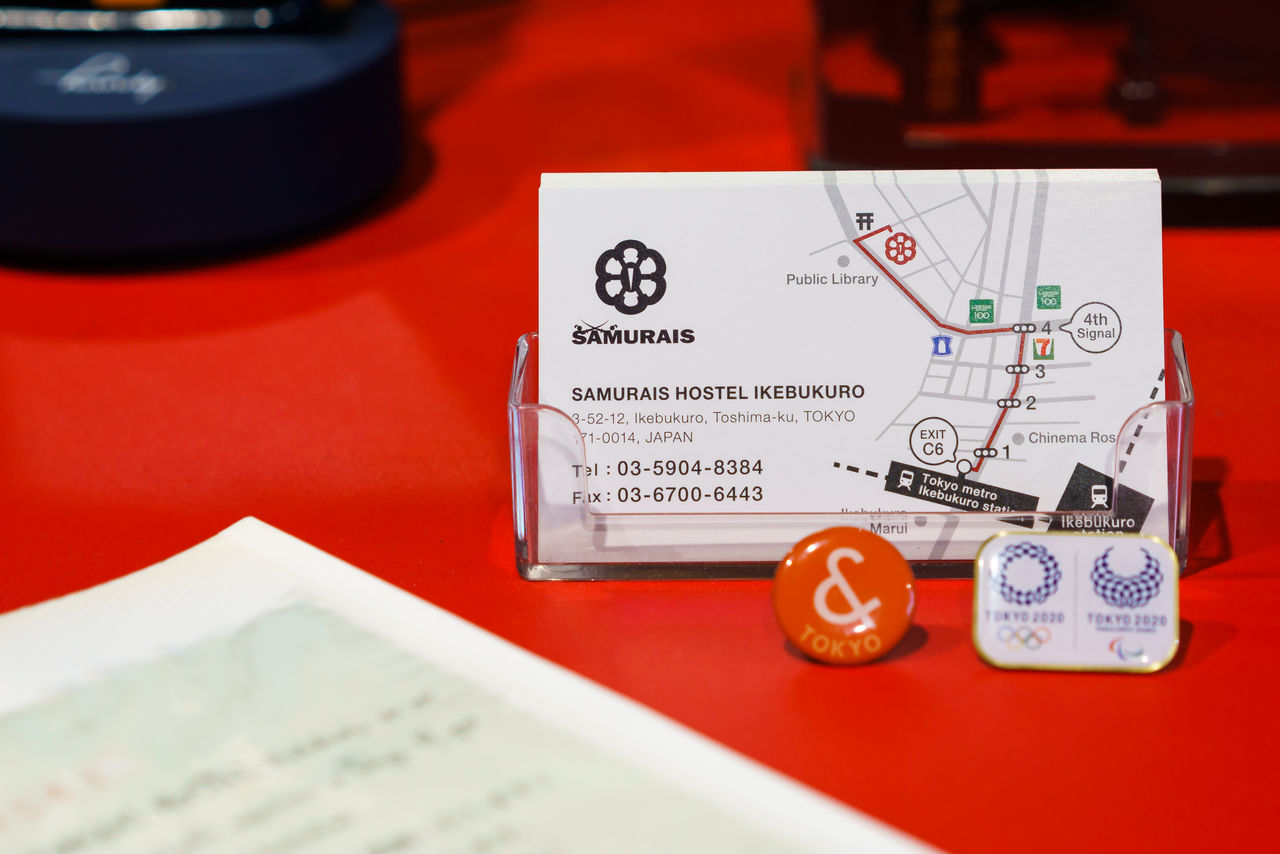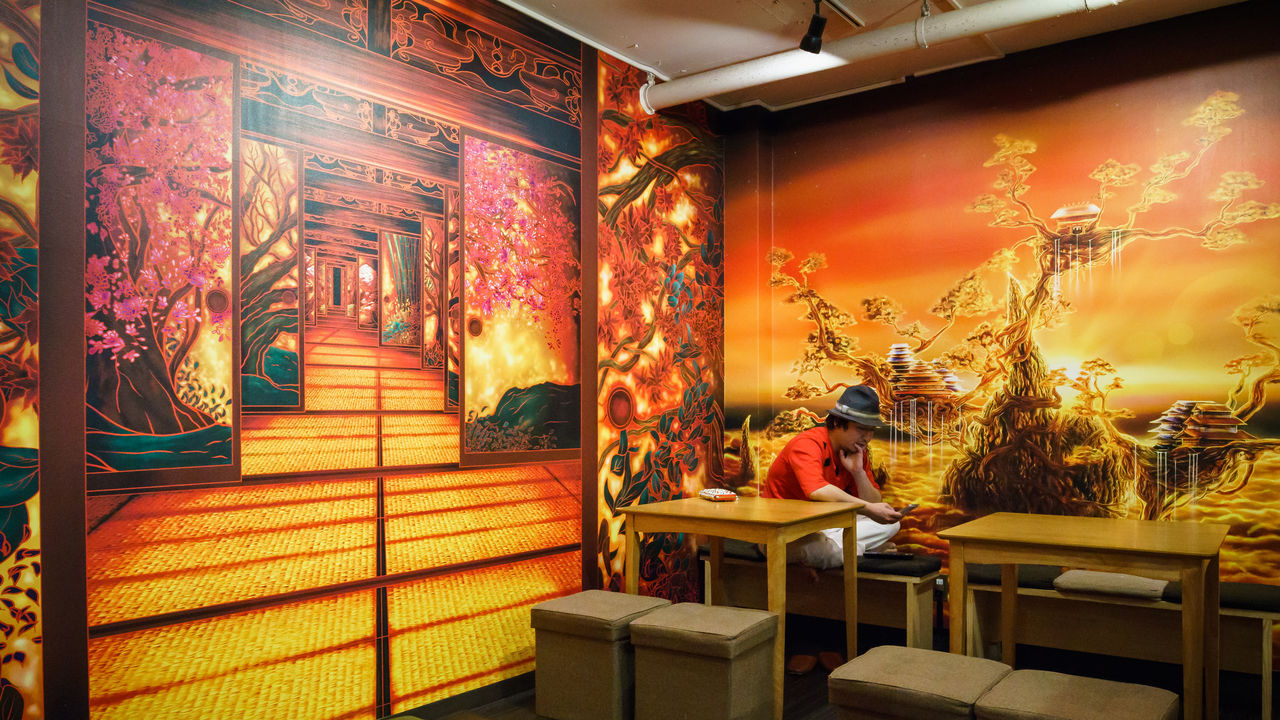
The Tokyo Samurais Hostel Ikebukuro: A Historical Place to Stay
Guideto Japan
Culture- English
- 日本語
- 简体字
- 繁體字
- Français
- Español
- العربية
- Русский
A Samurai Armor Reception
In 2016, the Samurais Hostel Ikebukuro opened for business, offering travelers a samurai- and ninja-themed place to stay right along the JR Yamanote Line ringing the capital’s center. Previously a shared house, the renovated building has been reborn as a thoroughly enjoyable hostelry, with a suit of samurai armor to welcome visitors and rooms decorated with images of Mount Fuji and gilded folding screens.
The four-story building has accommodations on the second, third, and fourth floors. We took a look inside, in our stealthiest manner.
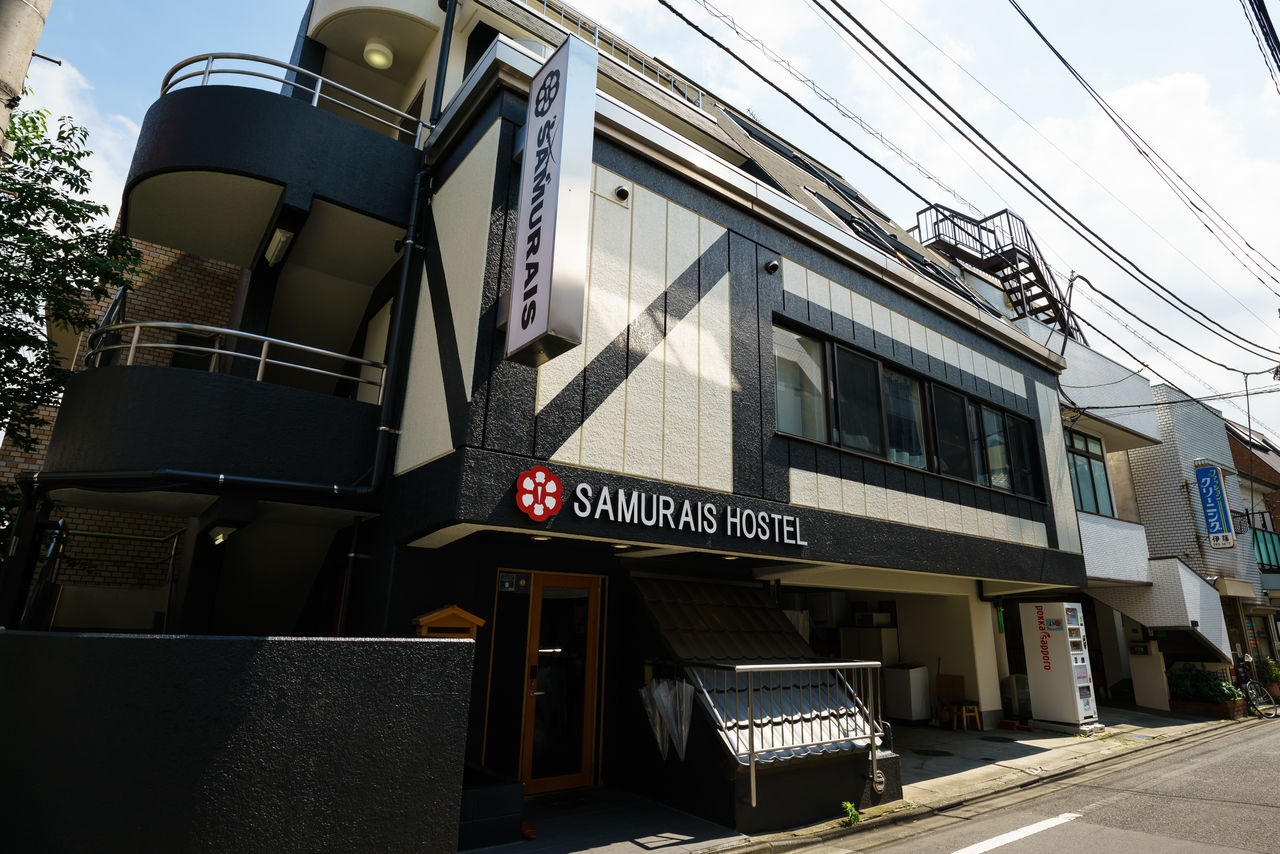 The exterior of this onetime shared house turned hostel.
The exterior of this onetime shared house turned hostel.
The entrance is decorated with a suit of samurai armor of the sort which a general or warlord would have worn. The suit, weighing some 15 kilograms, was painstakingly made by the skilled artisans of Marutake Sangyō, a Kagoshima Prefecture company specializing in armor-crafting. Just posing for a souvenir photo in this armor is enough to make one feel like a real military commander of Japan’s Warring States period (1467–1568).
Many of our female customers put it on too,” says Matsunaga Ryōta, the hostel’s managing director and business manager. “We also let smaller children pose in just the helmet, as the full suit is a little too heavy for them.
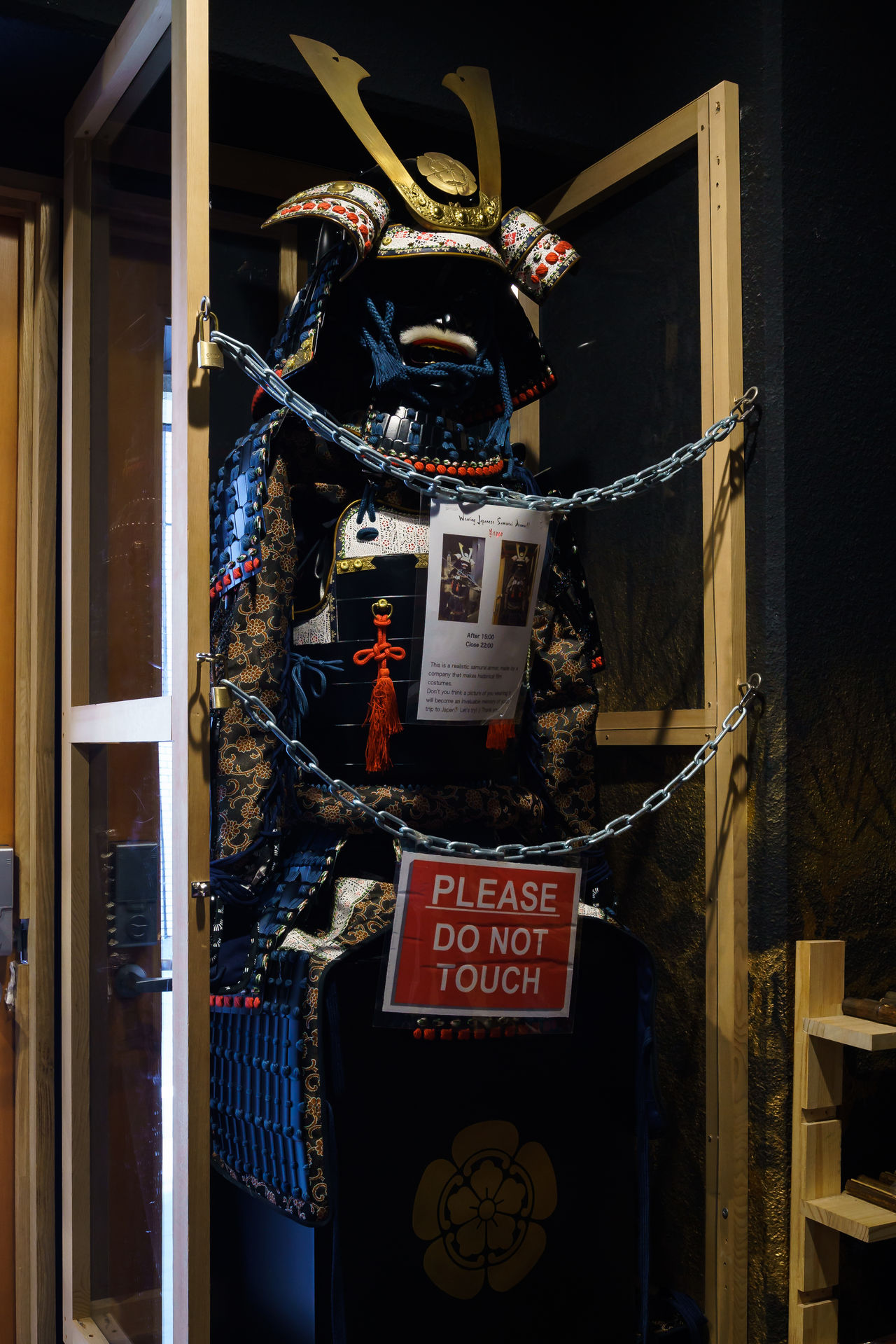 Visitors can wear the richly detailed suit of Japanese armor
Visitors can wear the richly detailed suit of Japanese armor
for a photo session for ¥1,000.
The three twin suites on the second floor were decorated by art college students, with each suite having its own distinctive design scheme to go with its name: Matsu (pine tree), Mount Fuji, and Ninja. The last and most popular of these, the Ninja suite, offers a blacklight image of a ninja clad in green against a moonlit night sky when the lights are turned off. The Mount Fuji suite, with its rendering of the mountain in crimson, is also an image of unearthly beauty.
The rooms’ furnishings seem bare-bones at first, but one only has to open the tatami-style beds to find folding mattresses and futons stored therein, designed to make the best use of the available space.
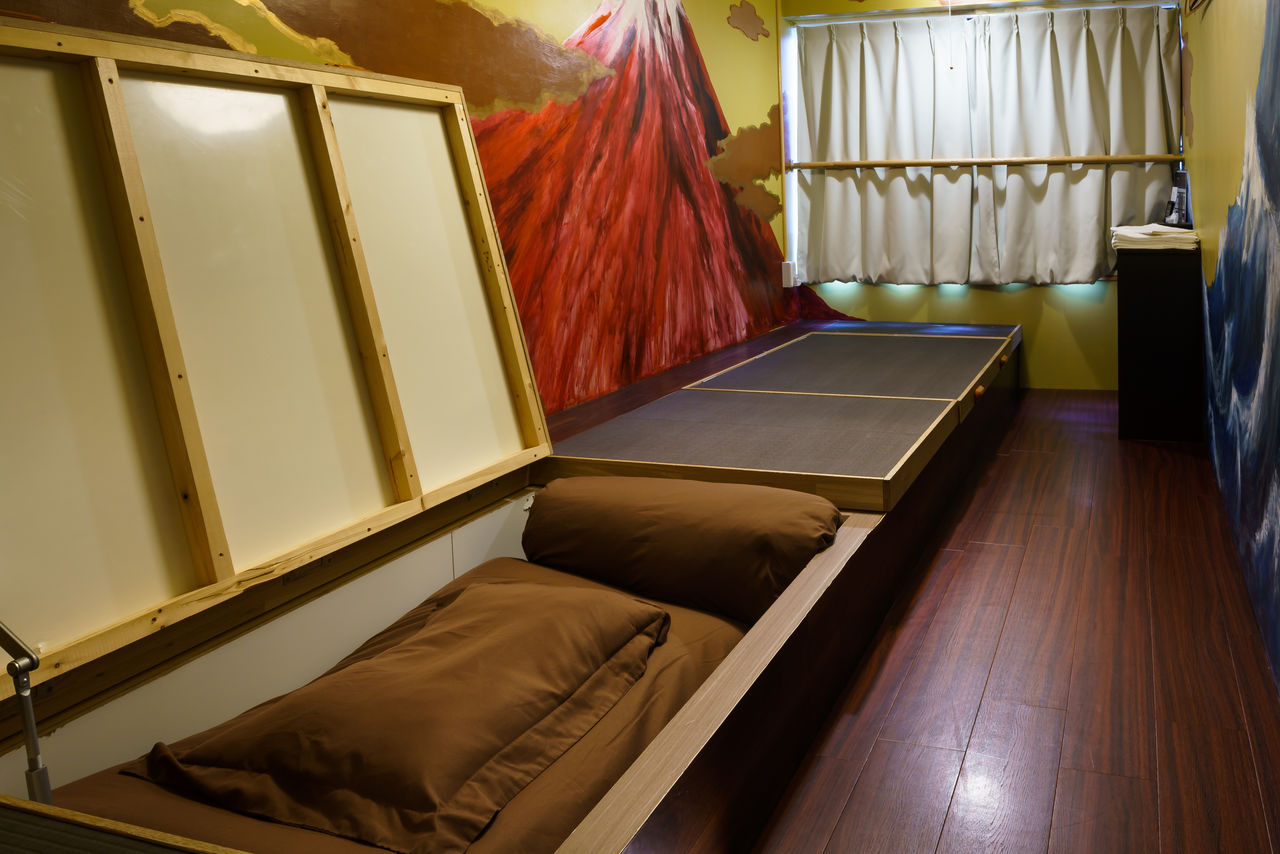 With the futons put away, the beds can be used as raised tatami to sit on.
With the futons put away, the beds can be used as raised tatami to sit on.
Attention to the Smallest Details
The third floor is a dormitory space, offering box-like bunk beds and single beds. Here, too, the attention to detail in the furnishings makes you feel as though you’d gone back to the sixteenth century, with playful staging to be found everywhere—the family crests on the walls, the classically styled wood screens, and even bathroom faucets in the shape of shishi-odoshi, the bamboo fountains that strike stones when they fill up with water.
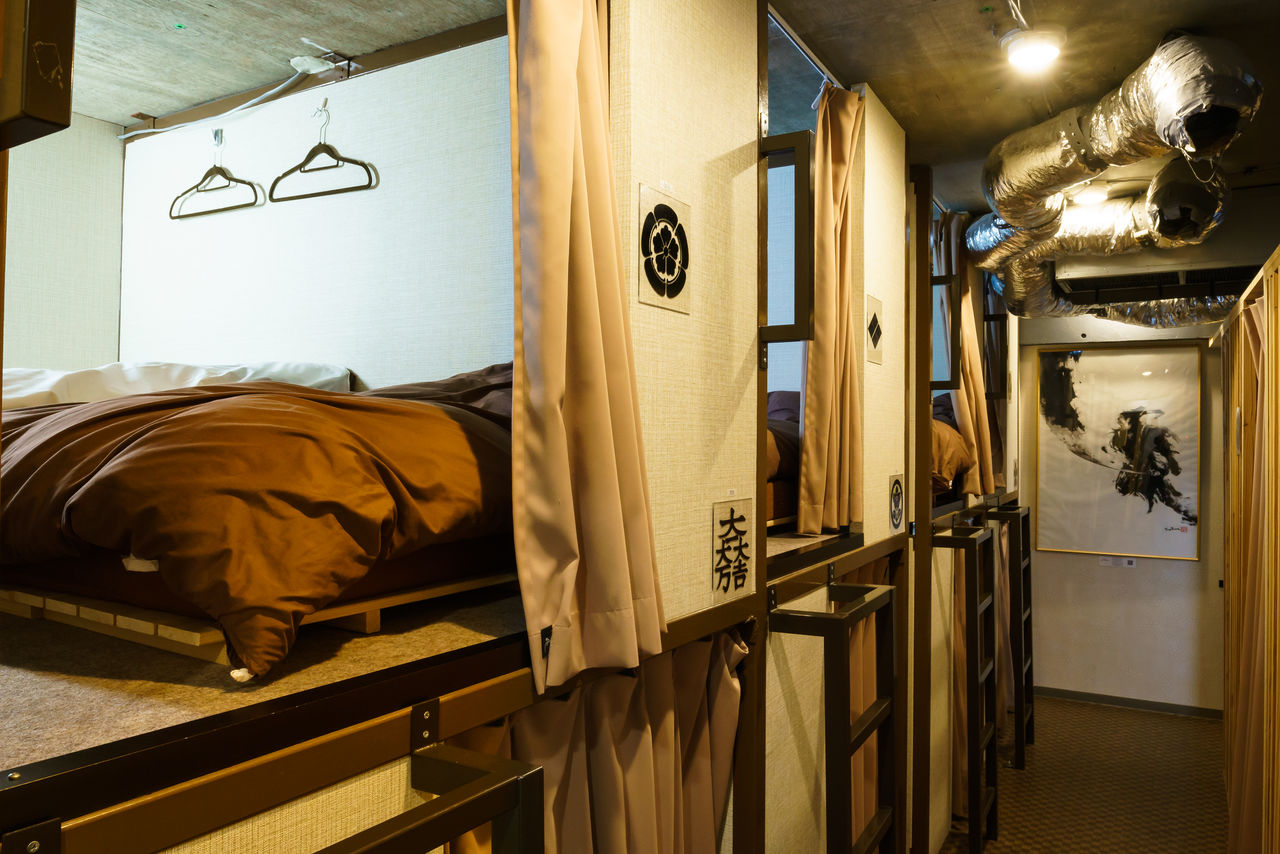 The top bunks are the perfect place to play at being a ninja, skulking in the attic.
The top bunks are the perfect place to play at being a ninja, skulking in the attic.
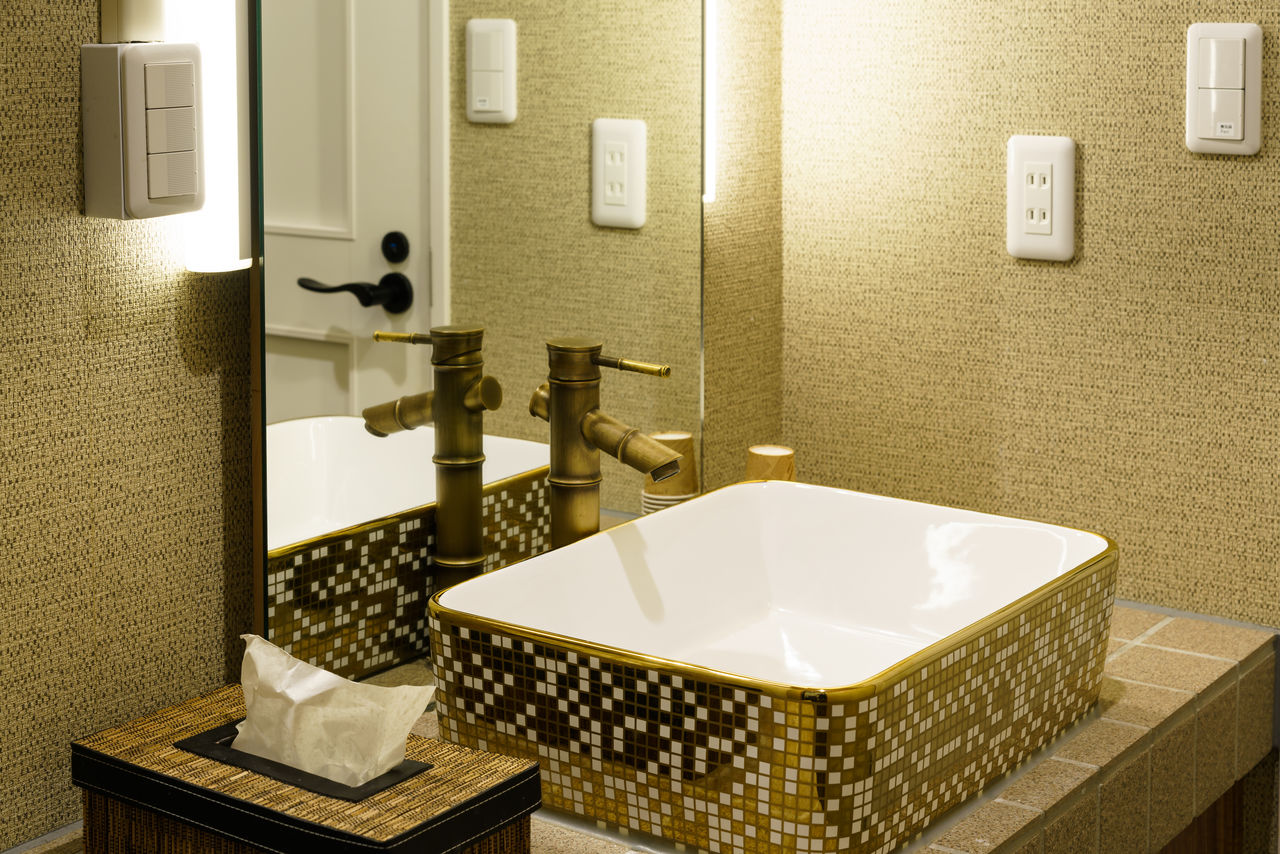 Golden tiles add a bit of flash to the simple bamboo styling of the sink faucets.
Golden tiles add a bit of flash to the simple bamboo styling of the sink faucets.
The only triple suite is on the fourth floor. Designed to look like the interior of a Japanese castle, this is also the only suite with its own bathroom and shower. The golden fusuma paper sliding doors, with cherry trees in bloom painted on them, bring to mind grand paper-screen paintings. These combine with the golden bedding to create an impression of luxury, making occupants feel like old-fashioned lords and ladies.
All of the beds are fitted with futons over thick mattresses.
“We took extra care with regard to sleeping comfort,” says Matsunaga. “You can’t get a good night’s sleep on a flimsy mattress. We care about cleanliness too. Many of the reviews we get mention being surprised at how clean our hostel is, and reading them motivates us to keep the place even cleaner.”
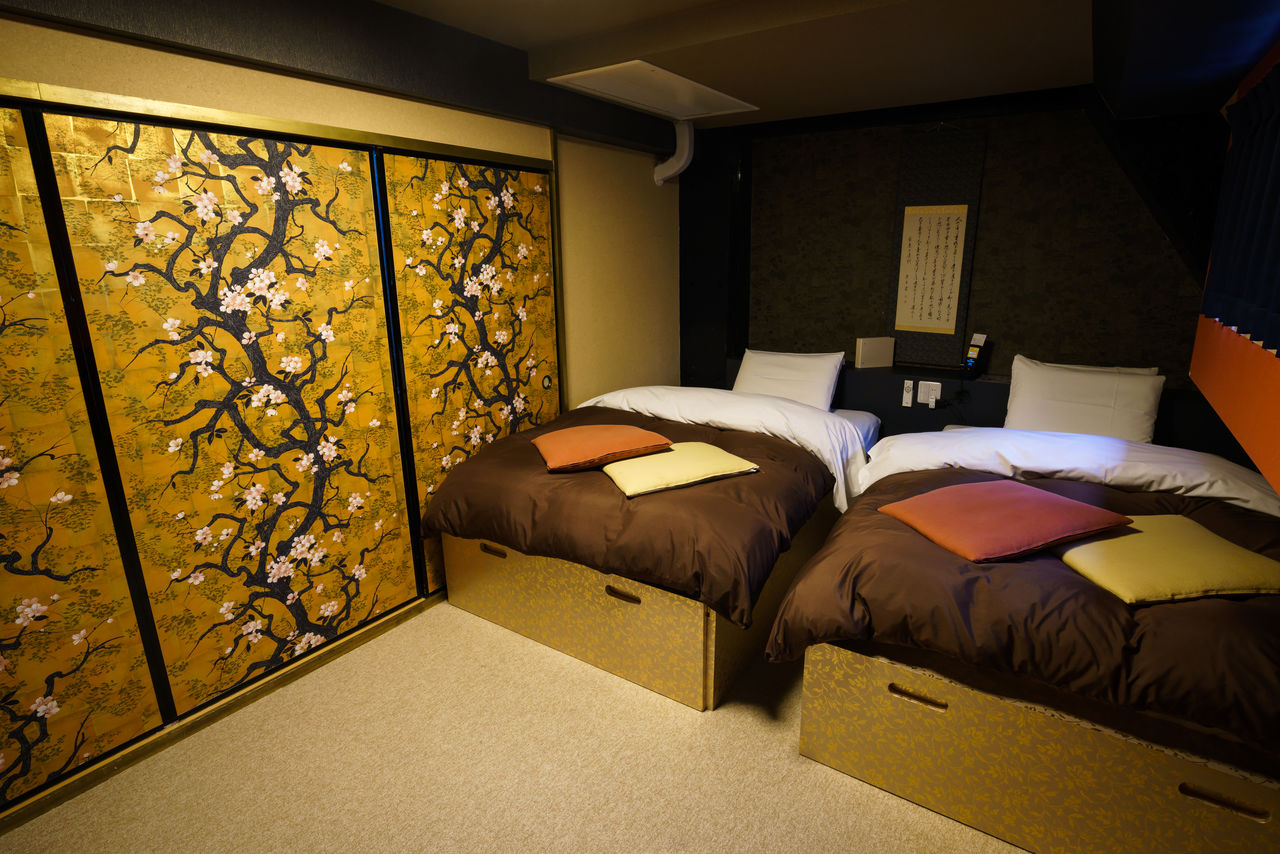 Comfortable beds in a glittering room.
Comfortable beds in a glittering room.
A Communal Area for Fans of Samurai and Ninja
We also looked in on the communal area in the basement. The dramatic wall paintings are the centerpiece of the space: produced by professional illustrators, they seem more like fantasy castles from a computer game than any real castle.
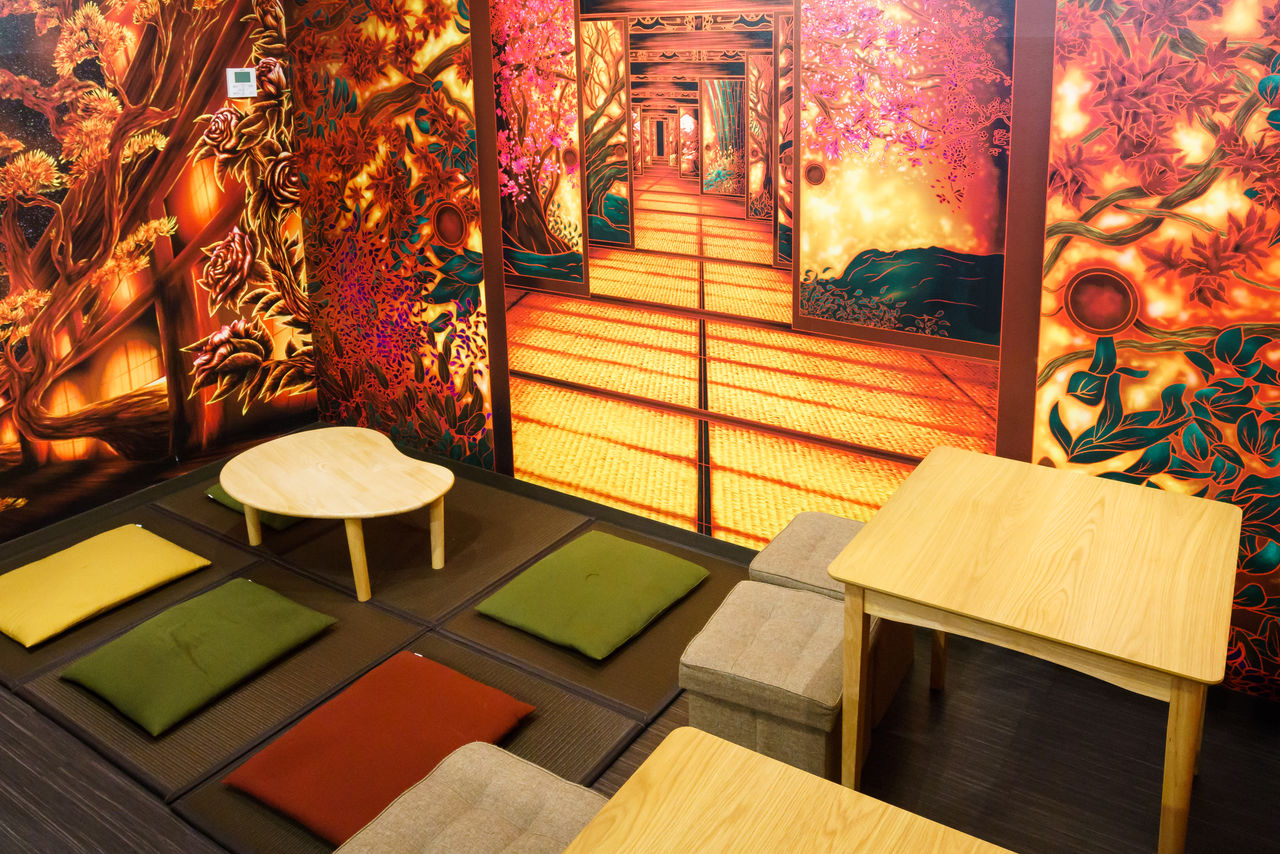 The images’ illusion of depth gives the communal space a video-game feel.
The images’ illusion of depth gives the communal space a video-game feel.
“Originally, we had ten art college students design the wall paintings,” says Matsunaga. “Then we did the whole thing over again a year after our grand opening. It may be gaudy, but people like it. Many of our guests got to liking ninja and samurai because of games like Nobunaga’s Ambition or Tōken Ranbu (Sword Dance). They know about samurai names, blades, and armor too.”
In the communal area, visitors meet and mingle excitedly. Some cooking is allowed here too. And the staff’s constant improvements made in response to visitor feedback, such as installing humidifiers and various other furnishings, attest to the benefits of information sharing in this area.
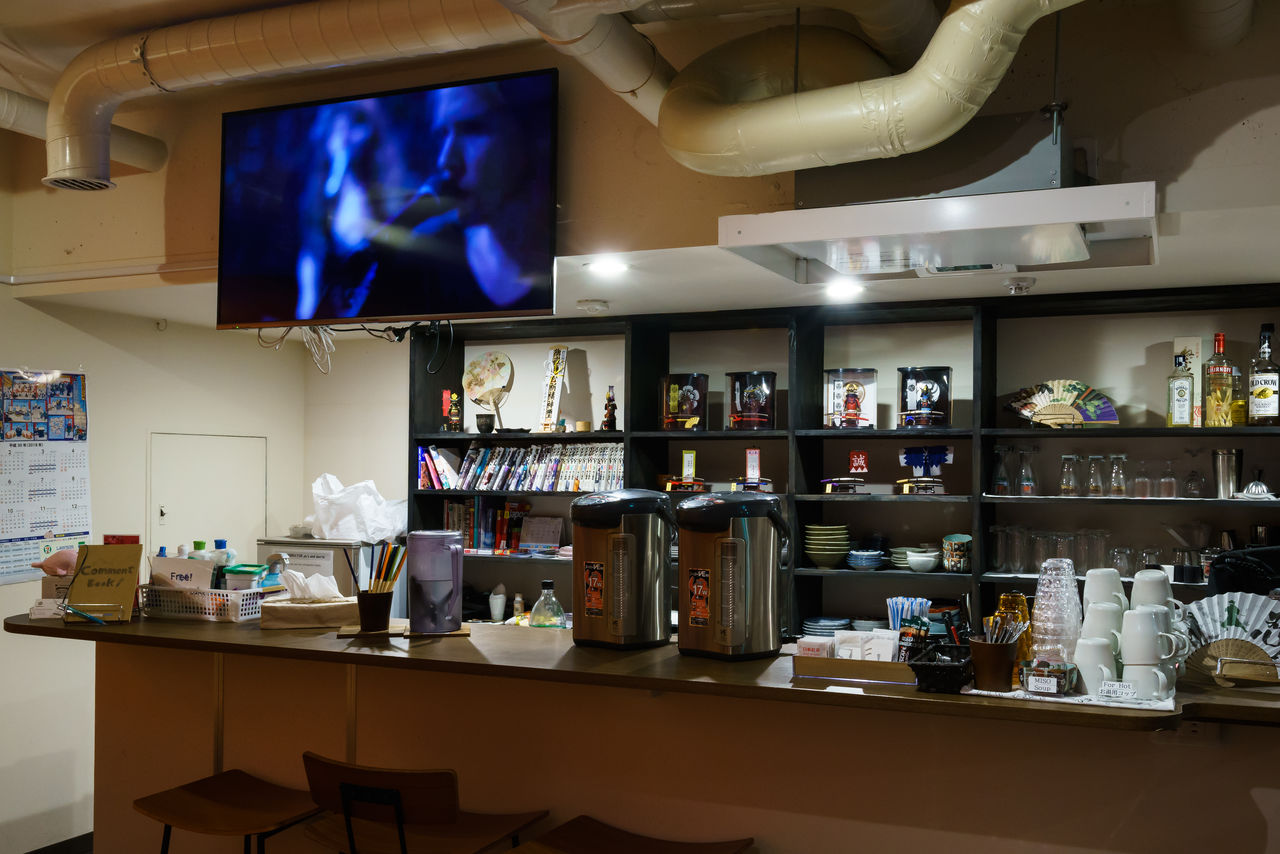 Visitors can help themselves to beverages in the communal area.
Visitors can help themselves to beverages in the communal area.
The customer base is evenly split between Japanese and foreign tourists. The operators expected most of the clientele to come from abroad, but there have been more Japanese visitors than anticipated due to Ikebukuro’s reputation as a haven for female otaku, as well as for the small stage theaters and live music clubs in the area.
The hostel’s charms are its cleanliness, entertaining atmosphere, attention to detail, and customer care. Wi-fi is available and the hotel is a smoke-free environment.
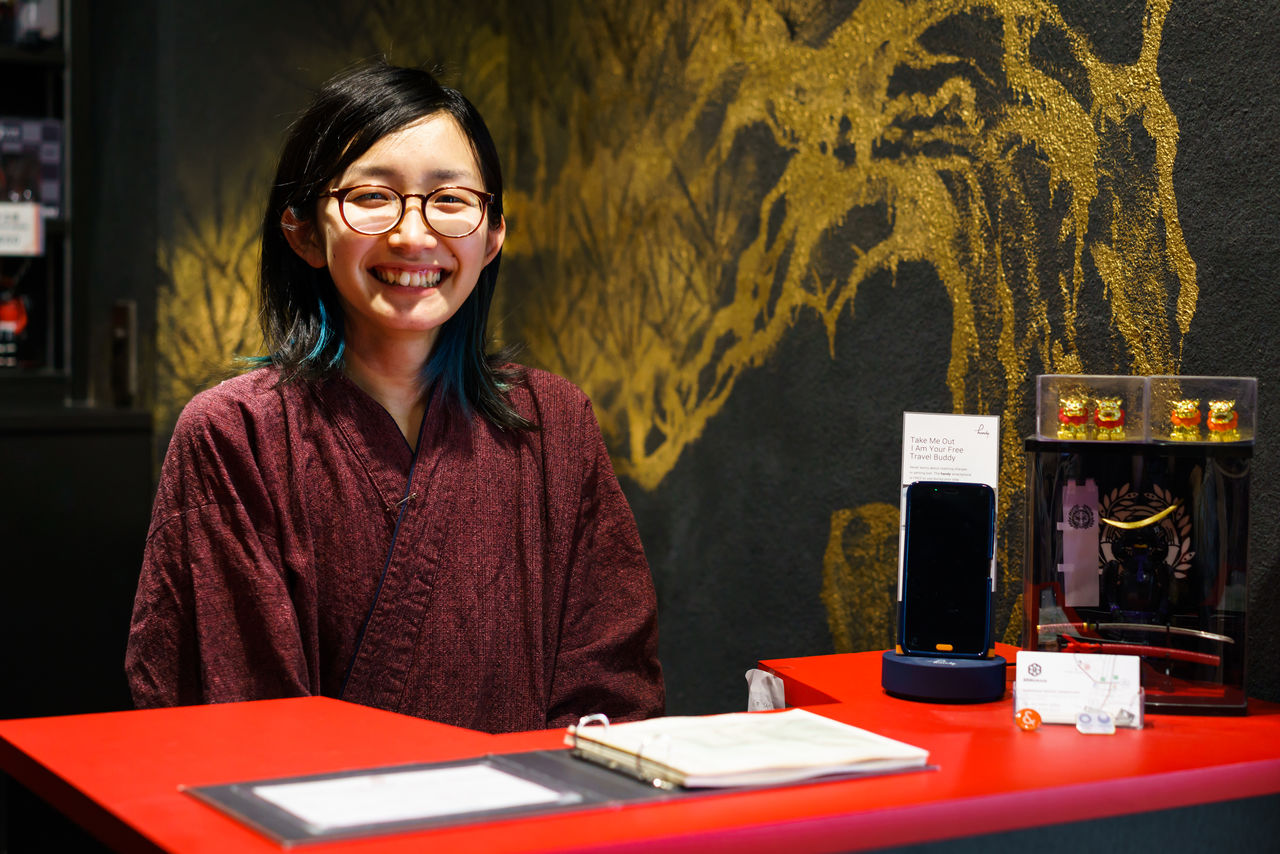 Ms. Yamanaka staffs the front desk.
Ms. Yamanaka staffs the front desk.
DATA
Samurais Hostel Ikebukuro
- Address: 3-52-12 Ikebukuro, Toshima, Tokyo
- Tel.: 03-5904-8384
- Access: 15 minutes from Ikebukuro Station on JR Yamanote Line, Saikyō Line, or Shōnan Shinjuku Line; Tokyo Metro Marunouchi Line, Yūrakuchō Line, or Fukutoshin Line; Tōbu Ikebukuro Line; or Seibu Ikebukuro Line.
- Rates: Beds start at ¥2,000 per person per night.
(Originally written in Japanese by Mitamura Fukiko. Photographs by Miwa Noriaki.)
